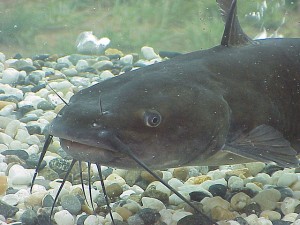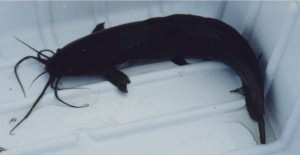Aquaculture catfish are a very popular source of protein as well as a healthy and delicious source of seafood in the United States. Catfish farming is an easy and flexible agriculture based business that can also be profitable. Farming catfish can be done anywhere if you have a suitable place and you can either take care of the protein needs of your own family or sell it to make more profit. There are many species of catfish available in the market. The type of catfish you want to grow depends on what your target market is, what your feeding plans are, and what size pond and area you are thinking about setting up your farm on.
Most species of catfish are resilient and prolific fresh water fish. You can grow them easily and harvest them quickly with little effort in a small or large pond. A suitable fish ponds size can be from 0.25 acres to larger ones with an area of 20 acres of farmland. All you need is a 5 gallon bucket and a pickup truck to start farming.
Starting a catfish farm
 The first step to starting a catfish farm is to decide what species of catfish you want to grow. It will depend on the size of your pond, operation of your farm, and the target market. If you want to start a large catfish farm, you must have a large amount of capital. A commercial catfish farm will require 80-100 acres of land and about quarter of a million dollars to successfully run a commercial catfish farm. However, a small farm will need fewer amounts of land and smaller capital. If you want to start small, you might begin with a small pond or you can start from a pond that you already have. A larger pond will yield more profit per pond and can grow larger fish, thereby making the expenses less per pound of fish. Larger farms can buy supplies in bulk which saves on overhead costs.
The first step to starting a catfish farm is to decide what species of catfish you want to grow. It will depend on the size of your pond, operation of your farm, and the target market. If you want to start a large catfish farm, you must have a large amount of capital. A commercial catfish farm will require 80-100 acres of land and about quarter of a million dollars to successfully run a commercial catfish farm. However, a small farm will need fewer amounts of land and smaller capital. If you want to start small, you might begin with a small pond or you can start from a pond that you already have. A larger pond will yield more profit per pond and can grow larger fish, thereby making the expenses less per pound of fish. Larger farms can buy supplies in bulk which saves on overhead costs.
You will also need an aerator. An electric aerator is fine if you have electricity available, but if electricity is not available at your farm location, think about alternative sources of energy such as gas or diesel run aerators. If you have a large pond already of about 0.25 acres, you can use that as your startup pond. You will have to make some modifications to it. A catfish pond must have smooth bottom, be clean and have a gradual slope.
Catfish ponds must have 20%-30% clay in the soil by weight to minimize seepage. You should allow excessive water to drain out of the pond. Make sure that your spillways allow 1-2 inches of water to run off at a time. Your pond depth should be 3 feet at the shallow end and 8 feet at the deep end. Too shallow of a pond may encourage weed growth.
Marketing plan
 To start your marketing plan, determine what type of catfish you will focus on. If you plan to have a large catfish farm, try selling your fish to fish processing plants. Many farmers are able to buy shares of the fish processing plants to which they sell their fish. Your profit per pound might be smaller but you will make up the money through volume.
To start your marketing plan, determine what type of catfish you will focus on. If you plan to have a large catfish farm, try selling your fish to fish processing plants. Many farmers are able to buy shares of the fish processing plants to which they sell their fish. Your profit per pound might be smaller but you will make up the money through volume.
If you decide to keep your catfish operation smaller, try targeting direct local customers in your area. Start with your relatives, friends and family. Many customers are interested in buying fresh fish directly from the farm instead of buying frozen and packaged fish.
Prepare a business plan
Make sure to construct a detailed feasibility report of your farm, where you will have details about your capital, expenses, and profit. Your feasibility report should include all essential items needed for your catfish farm operation and production annually, such as work force, feed, fuel, equipment, supplies, overheads, utilities, repairs and emergency funds. You will need a business plan if you want to secure financing for your business from a lender. You may also have to pay expenses such as interests on your mortgage, loans, and insurance and finance charges if you already have a loan or mortgage on your property or secured financing for your business. Make sure to include an estimate of costs of additional pumps, building construction, vehicles, feed bins and tractors.
Legal documents
Research on what permits and licensing you will need to start your business as a catfish farmer. Talk to other fish farmers in your area. Hire a consultant to help you with your paperwork or permits. A business consultant can often make things easier for you in exchange for a small fee. Make sure you meet all the state requirements regarding drainage, building, retail, tax, and other types of permits that they may need.
Health and environmental concerns
 Keep your fish healthy, make a point to detect early signs of diseases, and take the necessary actions to prevent them. Follow safety guidelines and medication regulations for your fish farm. Know what chemicals are safe to use and how to treat diseases and the water in an eco-friendly manner to treat diseases and pests. Several chemicals such as copper sulfate, formalin, hydrogen peroxide, and povidone iodine are FDA approved and are safe to use in your pond for treating catfish diseases.
Keep your fish healthy, make a point to detect early signs of diseases, and take the necessary actions to prevent them. Follow safety guidelines and medication regulations for your fish farm. Know what chemicals are safe to use and how to treat diseases and the water in an eco-friendly manner to treat diseases and pests. Several chemicals such as copper sulfate, formalin, hydrogen peroxide, and povidone iodine are FDA approved and are safe to use in your pond for treating catfish diseases.
Want more tips on business? Download our free eBook and unleash your entrepreneurial powers.
Source: WorldWide Aquaculture



